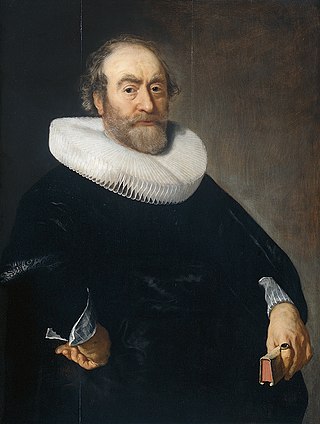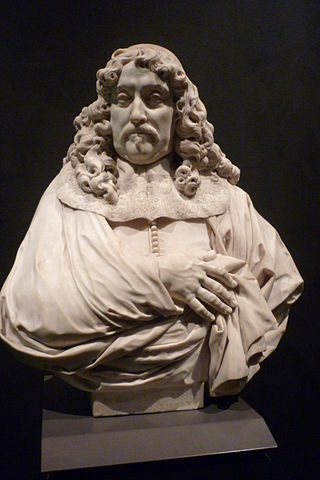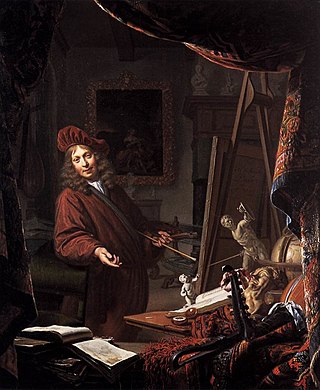Shelvock Manor is a house and grounds in a township of the same name near Shrewsbury, Shropshire, England. It was once a place of local importance, and was for more than two centuries the seat of the Thornes, a leading family in Shropshire. The first recorded spelling of Shelvock was Shelfhoc (1175), and later Sselvak and Schelfac. The name is most likely derived from the Saxon "ac" meaning oak, prefixed by its location on a shelf or hill.
Edenburg is an unincorporated community located 4 miles northwest of the town of Aberdeen, Saskatchewan in Canada. Edenburg has a population of 30, and is a mixed use residential/agricultural area.
Alta Rockefeller Prentice was an American philanthropist and socialite, daughter of Standard Oil co-founder John D. Rockefeller.

Jhr. Andries Cornelis Dirk de Graeff was a Governor-General of the Dutch East Indies and a Dutch minister for foreign affairs.

Cornelis de Graeff, often named Polsbroek or de heer van (lord) Polsbroek during his lifetime was an influential regent and burgomaster (mayor) of Amsterdam, statesman and diplomat of Holland and the Republic of the United Netherlands at the height of the Dutch Golden Age.

Andries Bicker, lord of Engelenburg was a powerful Amsterdam burgomaster and Dutch politician and diplomat during the Dutch Golden Age. He was a prominent member of the Bicker family of Amsterdam regents who, together with the related De Graeff family, governed the city of Amsterdam and with it the province of Holland for about half a century and, at that time, effectively the Republic of the Netherlands when it was at the height of its power.
Plumstead is a residential suburb situated in the Southern Suburbs of Cape Town in the Western Cape Province of South Africa.
Eersterust or "First Rest", often incorrectly spelled "Eersterus", is a formal South African township within the City of Tshwane Metropolitan Municipality and is located just about 15 km east of the Pretoria city centre. It is also referred to by locals as "Poort". Eersterust is situated west of Mamelodi.

Thorne is a municipality in the Pontiac Regional County Municipality, Quebec, Canada, about 63 kilometres (39 mi) northwest of Downtown Gatineau, part of the Outaouais region.
Sedgefield is a coastal town on the Garden Route in the Western Cape province of South Africa. It is situated on the N2 national road, between George and Knysna.

Andries de Graeff was a regent and burgomaster (mayor) of Amsterdam and leading Dutch statesman during the Golden Age.
Albert Andriessen Bradt was one of the earliest Norwegian settlers in New Netherland. In the early records he is often referred to as Albert Noorman ('Norwegian').

Michiel van Musscher was a Dutch Golden Age painter.

Jan Gerritsz. Bicker (1591–1653) was a merchant, mayor (burgomaster) and a member of the Bicker family, an influential patrician family of regenten from Amsterdam.
Hendrick van Rensselaer was director of the Eastern patent of the Rensselaerswyck manor. The estate was composed of land in Columbia County, New York, and land opposite Albany, New York, on the Hudson River, named Greenbush.

Bicker is a very old Dutch patrician family. The family has played an important role during the Dutch Golden Age. They led the Dutch States Party and were at the centre of Amsterdam oligarchy from the beginning of the 17th century until the early 1650s, influencing the government of Holland and the Republic of the United Netherlands. Their wealth was based on commercial transactions, and in their political commitment they mostly opposed the House of Orange.
Field Commandant Christian Jacobus Groepe (1789–1886) was a military leader of the Khoi people of Kat River, Cape Colony, in the nineteenth century.

The Haarlem Bank van Lening is a former city Bank van Lening that has been converted to a restaurant in Haarlem, the Netherlands.

The feudal barony of Okehampton was a very large feudal barony, the largest mediaeval fiefdom in the county of Devon, England, whose caput was Okehampton Castle and manor. It was one of eight feudal baronies in Devonshire which existed during the mediaeval era.

Mayken Lubbert van Pallaesdr., commonly known as Maria van Pallaes, was a Dutch philanthropist who established the Maria van Pallaes houses in the city of Utrecht. They consist of 12 almshouses and a refectory, together with a hofje or courtyard garden, to be used by the city's poor. After her death, the buildings were placed under the control of the Maria van Pallaes Foundation and another 28 almshouses were later built using her inheritance. The original 12 houses and refectory are now owned by the Utrecht Monument Foundation and are a Dutch national heritage site.













